Small Group Experiential Travel
Tour Code
XCM
Start
Zagreb (ZAG)
End
Dubrovnik (DBV)
Tour type
Cultural
Max Group Size
16
When To Go
May, Sep
Activity Level
3 - Active
Overnight in
Mostar, Zagreb, Split, Dubrovnik, Hvar, Plitvice, Korcula, Kotor, Brac
- Overview
- Info & Inclusions
- Itinerary
- Map & Hotels
- Photos
- Dates & Prices
Highlights
- Adriatic coast exploration
- Historic city visits (Zagreb, Dubrovnik)
- Island hopping (Hvar, Brac, Korcula)
- Natural wonder sightseeing (Plitvice Lakes, Kotor Bay)
- Cultural and culinary immersion
Description
** This tour replaces tour XAD from 2026 onward **
Discover the enchanting beauty of the Adriatic coast on this 15-day journey through Croatia, Montenegro, and Mostar. Explore historic cities like Zagreb and Dubrovnik, soak in the sun on the islands of Hvar, Brač, and Korčula, and marvel at the natural wonders of Plitvice Lakes and Kotor Bay. Indulge in leisurely day hikes through picturesque landscapes, immerse yourself in the rich history and culture of the region, and savour the delicious cuisine and local wines. From the vibrant coastal towns to the serene inland scenery, this tour offers a perfect blend of relaxation, exploration, and cultural immersion.
Discover the enchanting beauty of the Adriatic coast on this 15-day journey through Croatia, Montenegro, and Mostar. Explore historic cities like Zagreb and Dubrovnik, soak in the sun on the islands of Hvar, Brač, and Korčula, and marvel at the natural wonders of Plitvice Lakes and Kotor Bay. Indulge in leisurely day hikes through picturesque landscapes, immerse yourself in the rich history and culture of the region, and savour the delicious cuisine and local wines. From the vibrant coastal towns to the serene inland scenery, this tour offers a perfect blend of relaxation, exploration, and cultural immersion.
Price includes
- Full-time Tour Leader and local guide services at numerous locations.
- Breakfast and dinner (mostly local restaurants) daily.
- All accommodation, transport, sightseeing and entrance fees for sites noted as 'visited' in the detailed itinerary.
- Gratuities for local guides, drivers, restaurant staff, porters (if available)
- Airport transfers for land & air customers and for early arriving/late departing land & air customers who book both their air AND extra hotel nights through us.
Exclusions
- International airfare to/from the tour.
- Lunches, Tour Leader Gratuities, drinks, personal items (phone, laundry, etc), international air taxes (if applicable) and any excursions referenced as 'optional'.
- Airport transfers for Land Only customers.
- Optional travel insurance.
Trip Info
- Seasonality and Weather:
This tour is offered in late spring and late summer/early fall when temperatures are relatively mild, crowds thinner, and airfares lower.
Late spring is popular with visitors who enjoy green landscapes and wildflowers. The region has a mild Mediterranean climate with early springs, long hot and dry summers, and autumns that are bright and warm into late October. Showers are possible in spring and possible, though less likely, in fall.
Coastal towns/cities are busy with cruise passengers from June to September; visiting outside of these times allows us to escape the worst of the crowds in this popular part of the world. - Transport and Travel Conditions:
Most land transport is by private air-conditioned motor coach, the size of which will depend on ultimate group size (see 'group size'). Some shorter journeys via public bus or taxi.
OUR HIKES
Because some hikes can/may be adjusted at the discretion of your Tour Leader depending on things like weather and group interest, the final distances/durations of our hikes as indicated in our itinerary should be taken as guidance only. In the meantime, however, we can advise that, generally-speaking, our walks are leisurely on well-trodden pathways over undulating terrain (some walks are downhill), 2-5 hours in overall duration with plenty of breaks for refreshment, photos, and taking it all in. Please note that some surfaces feature loose material (ie stones, gravel, sand etc) which can be slippery. Good footwear/tread and walking poles will help to steady you and support your knees.
Our difficulty rating "Level 3" refers to our walks/hikes that go beyond town/city walking tours on pavement or cobblestones, to hiking on "natural" surfaces (ie gravel) and pathways that feature some elevation gain/loss as opposed to reasonably flat terrain. Such hikes are leisurely with plenty of stops along the way. Though our walks/hikes do not occur every day, even when not on a "hike" we will be on foot quite a lot with town walking tours, site visits, and plenty of places with uneven surfaces and stairs. Participants should be fit and active and accustomed to trail walking, possibly in some remote locations, and be prepared to engage in a conditioning regimen prior to the trip.
This is a hotel-based tour with no camping, and you are required to only carry what you need for the day.
For daily summaries of our hiking activities, please refer to the tour itinerary.
Am I suitable for this tour? Please refer to our self-assessment form - Accommodation:
Well-located, air-conditioned, mid-range hotels and inns (3&4-star) used throughout. All hotels have en suite bath. Porter service is sometimes available (see 'inclusions') though you should be independent with your luggage. Single rooms are limited in number and likely smaller than twins (typical of Europe).
For more information, please click on the "Map & Hotels" tab - Activity Level: 3
These tours are considerably more strenuous than our Level 1 & 2 "cultural" tours and feature walks/hikes on undulating and uneven pathways for 3-7 hours at a leisurely pace. We don't hike every day, but participants should be fit and active and accustomed to trail walking, possibly in remote locations, and be prepared to engage in a conditioning regimen prior to the trip. Altitude may also be a factor on some tours, though none of our hiking tours currently occur above 3000m/10,000 ft. These are hotel-based tours with no camping, and you are required to only carry what you need for the day.
To learn more about the Activity levels, please visit our tour styles page. - Staff and Support:
Tour Leader throughout, driver(s), local step-on guides in various locales. - Group Size:
Maximum 16 plus Tour Leader
Download Itinerary
- Day 1:Arrival in ZagrebToday we arrive in Zagreb, capital of Croatia.
From its intriguing architecture to nearby natural havens, this underrated European capital has something for everyone. Unlike most western European capitals, Zagreb's cityscape is a fascinating mixture of classic Austro-Hungarian architecture and gritty socialist structures. With an electric mix of Italian, Turkish, and Austro-Hungarian influences, even the "coffee culture" here is steeped in history.
* PLEASE NOTE: In 2000 the region experienced an earthquake which damaged 2,000 buildings in Zagreb, many of which are still closed off for repairs. This means that many/most of the buildings, including museums have been closed without a clear sense of when they may re-open. This is why, in part, we are including a day trip to nearby Samobor (tomorrow) in order to make the most of our time in the region.
Overnight in Zagreb.
Included Meal(s): Dinner - Day 2:Zagreb: Day Trip to SomoborThis morning we depart the capital and travel by bus to Samobor, a charming small village is located just a short drive from Zagreb.
A famous writer, Antun Gustav Matoš, once said that Samobor was the most Croatian of all Croatian towns. This charming little town near the border has officially been a town since 1242 when the King Bela IV awarded it with a charter giving it the status of a free royal market town. A special spirit and atmosphere nurtured in Samobor to his day is largely the result of the efforts made by a number of local people and settlers who felt at home in. After an informal orientation, you will be free to explore on your own and find some lunch before we head back to Zagreb mid-afternoon.
A good place to start is King Tomislav Square, a true highlight of the town. The square dates back to the 19th century, and today this historic square is filled with cafes, boutique shops, and restaurants. Standing tall in the center of town is the beautiful yellow-coloured Parish Church of Saint Anastazija. This church is one of the earliest Baroque style churches in Croatia, and was built in 1675, upon the site of an earlier wooden church that was built in the 14th century. The church is known for its lovely Baroque style, stained glass, and for its famous wounded Christ sculpture. The church is also adjacent to the park Domovinske Zahvalnosti, a nice green space in the town.
Sitting atop Tepec Hill is the ruins of the Samobor Castle. The castle was first built between 1260-1264 by supporters of the Czech King, Ottokar II of Bohemia who was at war with the Hungarian empire. The last residents of the castle left in the 18th century, which has left it to the current state it is in today as castle ruins. To get up to the castle, you will need to hike around 20-30 minutes. The hike is steep and it is necessary to wear sturdy shoes. At the top, you’ll have a chance to explore the historic castle ruins, which is a really unique experience.
Samobor Museum is located in the town center and is a small museum with artifacts about Samobor’s history. It doesn’t take very long to visit this museum, but is a nice stop to learn more about the area.
One of the big draws of Samobor is food! The region offers a variety of dishes, including local trout, sausages, salami, special mustard, mushrooms, pork chops, kotlovina (meat prepared outdoors in a cast iron pot), and local miners' cake - greblica. The town is most famous for its kremsnita cream cake. Although you can sample this delicious custard cream cake all over Croatia, the Samobor version is fluffy and airy, and you eat it while its still slightly warm.
Return to Zagreb.
Overnight in Zagreb.
Included Meal(s): Breakfast and Dinner - Day 3:Zagreb - Plitvice National Park HikeThis morning we depart the capital by road and head to the iconic Plitvice National Park, where 16 lakes, each at a different level, join each other in a series of cascading waterfalls. We embark on a hike immediately upon arrival (hotel check-in after our hike).
Travertine terraces have been continuously reforming themselves over 10,000 years as calcium carbonate dissolves and settles, forming barriers and cascades. Imagine Niagara Falls diced and sprinkled over a heavily forested Grand Canyon. This lush valley of terraced lakes is laced together by waterfalls and miles of pleasant wooden-plank walks. Countless cascades and strangely clear and colourful water make the Plitvice Lakes National Park a misty natural wonderland. The ever-changing fluid landscape -- created by water, gravity, limestone and time -- is mesmerizing.
Look for wildlife as you hike -- the park is home to deer, wolves, wildcats, wild boar, and more than 160 species of birds (from eagles to herons to owls). The lakes (and local menus) are full of trout. The entire area is protected as one of UNESCO's Natural World Heritage Sites. We will follow wooden paths on our walk around the Lower and Upper Lakes, ending with a short boat ride across the largest lake.
TOTAL WALKING TIME +/- 4 hours (leisurely/easy, mostly flat)
Our hikes: Because some hikes can/may be adjusted at the discretion of your Tour Leader depending on things like weather and group interest, the final distances/durations of our hikes as indicated in our itinerary should be taken as guidance only. In the meantime, however, we can advise that, generally-speaking, our walks are leisurely on well-trodden pathways over undulating terrain (some walks are downhill), 2-5 hours in overall duration with plenty of breaks for refreshment, photos, and taking it all in.
Overnight in Plitvice.
Included Meal(s): Breakfast and Dinner - Day 4:Plitvice - Paklenica National Park Hike - SplitToday we travel to Split via Paklenica National Park where we enjoy a hike.
The park is situated south of the Velebit range of mountains (the largest in Croatia) and covers an area of just under 100 square km, with a mixture of high peaks with stunning views, deep gorges, and beech and pine forests. We take the trail that leads from the main entrance, along a dry creek bed in the shade of mostly Adriatic black pine trees. The section of the route that we cover is called "The Educational Trail" and is full of information boards describing the natural and cultural features of the area.
Next we come to an area where rock climbers from all over the world come to scale the limestone cliffs, making this National Park and UNESCO world Heritage site one of the best-known rock climbing places in all of Europe. Next comes a steepi-sh uphill section of switchbacks that eventually takes us to a shaded, flatter trail. And finally we come to a simple hut that serves cold beer and simple home made food.
After a break here we descend on foot using the same trail we came up.
Our final destination for the day is Split (ancient Spalato), the second largest city of Croatia. The historic city center actually lies in the walls of the enormous retirement palace of the Roman Emperor Diocletian, built between 295-305 AD. The palace served as a palace, military fortress, and later, a fortified town. The city is enclosed by huge walls, pierced by 4 main gates.
On arrival we'll have a walkin tour of Split (ancient Spalato), the second largest city of Croatia. The historic city center actually lies in the walls of the enormous retirement palace of the Roman Emperor Diocletian, built between 295-305 AD. The palace served as a palace, military fortress, and later, a fortified town. The city is enclosed by huge walls, pierced by 4 main gates.
TOTAL WALKING TIME (Paklenica hike): +/- 4 HOURS. 8 km/5 miles. Elevation gain/loss 200 m/656 ft.
Overnight in Split.
Included Meal(s): Breakfast and Dinner - Day 5:Split - Ferry to Brac Island & Hermitage of Blaca HikeThis morning we will take an early ferry to the town of Bol on nearby Brac Island, the highest and third largest island in the Adriatic.
Today's excursion (prior to hotel check-in) on Brac takes us on a relaxing and panoramic boat ride along the coast of Brac to a hiking trail that leads us up to the intriguing Hermitage of Blaca, now a museum. Departing from Bol, our boat will pass Croatia's most famous beach, the Golden Horn (Zlatni Rat), before continuing past pine forests, olive groves and coastal vineyards to the trailhead in Blaca Bay.
The reward for our 45-minute uphill climb is a visit to the dramatically situated Hermitage of Blaca, whose stone structures cling to cliff overlooking a dry ravine. The hermitage was established in the 16th century by monks from the mainland town of Polijice who sought refugee from invading Turks. Originally situated in a cave, the hermitage was built up over the centuries to include a church, school, astronomical observatory and library. Today the museum houses a unique collection of ancient books, clocks, astronomical instruments and artifacts from the life of
the last monk to inhabit Blaca, Niko Milicevic.
After a tour of the hermitage we return to our boat in travel back to Bol, where you have the remainder of the afternoon to explore the town or stroll/swim at Zlatni Rat (the Golden Horn). Even if you're not a "beach person," this stunningly unique stretch of idyllic sand is not to be missed. Considered one of the most beautiful in Europe, the strand has become an iconic symbol of Croatia and the whole of the Mediterranean.
TOTAL WALKING TIME +/- 2 hrs; elevation variation +/- 250m/820 ft
Overnight on Brac.
Included Meal(s): Breakfast and Dinner - Day 6:Brac Island - Ferry to Hvar Island: Walking TourToday we travel by ferry to Hvar, "Queen of the Dalmatian Islands," considered one of the ten most beautiful islands in the world.
The island of Hvar receives 2,724 hours of sunshine per year, more than anywhere else in Croatia, and is thus called the "Island of the Sun". Greeks from Paros first settled on the island in the 4th century BC in Pharos, the modern town of Stari Grad. In the 13th century, the capital of the island was transferred to the town of Hvar (a mutation of Pharos in Slavic) and prospered during the 3.5 centuries of Venetian rule. This picturesque town and marina is alive with the constant hum of activity.
We will have a walking tour through narrow streets to the 15th century Franciscan Monastery where we visit the Renaissance cloister -- the old rectory that today houses a collection of lace, manuscripts and books, and the church with its remarkable collection of paintings. We visit St Stephen's Cathedral, and see the Arsenal (perhaps closed for refurbishment), a thick walled fortress overlooking the harbour.
We'll also include a walk up to the Venetian fortress that looms above the town -- definitely one of the highlights of our visit to this stunning place.
Overnight on Hvar.
Included Meal(s): Breakfast and Dinner - Day 7:Hvar & Sveta Nedelja HikeHvar is a set on an east-west ridge of Mesozoic limestone and dolomite, which was part of the mainland until approximately 11,000 years ago. Around that time, sea levels rose, filling the valleys that are now the channels between the islands. Hvar has a typical karst landscape, which means limited or no surface water, despite adequate rainfall, which disappears quickly into crevices in the ground. Farming in such areas requires careful conservation of water, and protection of the soil against erosion. The water cisterns in the fields and the dry-stone walls/terracing on the slopes are necessary for the continued success of agriculture on the island. The island has a typical Mediterranean vegetation, mostly bare with woody scrub at higher, steeper elevations, turning to pine forests on the lower slopes.
This morning we drive to the village of Sveta Nedelja where we begin our uphill hike.* We then walk to the highest part of the island; you will enjoy beautiful scenery, a cave with a monastery, views of beautiful beaches, and vineyards. From (near) the top, we are met by our vehicles and transferred back down to Hvar (45 min) with time at leisure to enjoy this charming town.
* Please note that we choose to walk uphill as past travellers and guides have noted that we are less likely to slip on loose material than if we descended. This is one of the most beautiful walks of the tour, but it is also the most "technical" in that you need to be steady on your feet on some sections of crumbling limestone that require alertness. In consultation with your Tour Leader (who will be familiar with your capabilities by this point), if you'd prefer something a little easier, there is plenty of alternative walking in and around Hvar and it's waterfront.
TOTAL WALKING TIME +/- 3 HOURS, 6 km / 3.73 miles. Elevation gain 550 m / 1,804 ft.
Overnight in Hvar.
Included Meal(s): Breakfast and Dinner - Day 8:Hvar - Ferry to Korcula IslandToday we travel by ferry to the breathtaking island of Korcula.
The cluster of brilliant red-tiled roofs stand out vibrantly in contrast with the aquamarine harbour waters, clear to a depth of 21m! Korcula was settled by the Greeks who called the island "Korkyra Melaina" or "Black Corfu" because of the dark appearance of its densely wooded forests. Today the island is covered with olive groves and vineyards. The island is also proud of its heritage -- traditional shipbuilding, stone masonry, and Croatian folk traditions of costume and dance.
Later this afternoon we will have a walking tour of the old town. The street plan of the town is unique and often compared to a fishbone pattern: the north-south streets allowed the defenders of the town to reach the walls and towers, and the east-west lanes were designed to capture the pleasant maestral winds and minimize the force of the cold "bora." The Venetian Cathedral of St. Mark is an architectural delight, squeezed into a small square. Tucked into a narrow lane nearby is the small house where it is believed Marco Polo was born. We will also visit the Treasury and Town Museum with exhibitions of Korcula's history and traditions from prehistoric times to the present (note that recent tours have reported that the museum has been closed due to staffing shortages).
Overnight in Korcula.
Included Meal(s): Breakfast and Dinner - Day 9:Korcula: Walking 'Napoleon's Road'Today we begin our walk along 'Napoleon's Road' toward Pupnat. We'll detour briefly to see an old everygreen oak (Quercas ilex) forest growing in and around some giant limestone boulders.
Pupnat is a village in the interior eastern part of the island of Korcula, located on the regional road running along the island. The population of Pupnat is about 500, making this the smallest village on the island. The name Pupnat, according to some interpreters, derives from "pampinata," which means vine leaves. The Illyrian lived in the area of Mocila, where remains of Illyrian graves have been found. The location of the village was chosen by its settlers in the hilly part of the island so as to be invisible from the sea and passing pirates.
Our walking route passes small farms and vineyards surrounded by stone walls dotted with "kucice," traditional dry stone huts used for housing livestock. The prehistoric life that existed in the area was found in Jakasove Spila (cave). Zrnovo has numerous small churches that one can see walking along the road.
We transfer by road back to Korcula in the early afternoon (ie in time for you to find some lunch) and have the balance of the day at leisure.
TOTAL WALKING TIME +/- 4 hrs; elevation variation +/- 100m / 330 ft.
Overnight in Korcula.
Included Meal(s): Breakfast and Dinner - Day 10:Korcula - Ferry to Mainland - Drive to Mostar, Bosnia and Herzegovina via PoticeljToday we ferry back to the mainland and head inland where we cross the border into Bosnia and Herzegovina (have your passports ready!), a country made up of two regions separated by the Dinaric Alps, with Bosnia to the north and Herzegovina to the south. They each have their own unique cultural histories but share many similarities in language, ethnicity, culture and identity. Also confusing is the fact that Bosnia and Herzegovina is a single country consisting of two 'Entities', one of which is The Federation of Bosnia and Herzegovina, and the other is the Republic of Srpska. Each of these entities includes part of Bosnia and part of Herzegovina.
Our route takes us on a breathtaking drive through the Bosnian Mountains, with a break in Pocitelj. This quaint and unique oriental style town is listed as a UNESCO World Heritage site with its stunning oriental architecture and Ottoman feel. Here one will find the longest operating art colony in southeast Europe. The most striking object in Pocitelj is the Sahat Kula, a silo-shaped fort that towers on the top of the hill above the town. It used to house watchmen and military guarding against possible invasion from the Neretva Valley.
We continue to Mostar (located in Herzegovina), where we have a leisurely walking tour upon arrival. Mostar began as a small hamlet at a strategic crossing of the Neretva River. Its hinterlands consisted of a broad agricultural plain on the west bank and steep terraces on the east bank surrounded by barren mountains. A multi-ethnic and multi-cultural settlement, the city has possessed an independent political identity since the 12th century. The architecture is a unique combination of Turkish ingenuity plus Herzegovinian and Dalmatian workmanship.
Our tour will include the historic oriental old town, which developed in the 15th and 16th centuries as an Ottoman frontier town. Today, the reconstructed Old Bridge and Old City are considered by some to be a symbol of reconciliation, international cooperation, and the coexistence of diverse communities. In 2005 the Old Bridge Area of the Old City was declared a UNESCO World Heritage Site. We also include the Museum of War and Genocide Victims, a poignant memorial dedicated to the victims of the Bosnian War (1992-1995).
Overnight in Mostar.
Included Meal(s): Breakfast and Dinner - Day 11:Mostar - Blagaj - Trebinje, Herzegovina - Kotor, MontrenegroGetting an early start this morning, we depart Mostar and travel 15 minutes to the nearby village of Blagaj.
Blagaj's raison d'etre is likely the Buna Spring, which flows out of a 200m cliff wall and single-handedly creates the Buna River. Unsurprisingly, the Ottoman sultan was impressed and ordered a Tekija to be built right next to it. This 16th century house/monastery was built for the Dervish cults and is still one of the most mystical places in all of Bosnia and Herzegovina. This sleepy town moves at a slow pace and many of its old structures are reminiscent of Ottoman days.
We will enjoy a walk around the town, visiting the 17th century Velagic house, a beautiful example of Ottoman stone masonry. From a point near the Tekija Dervish House, we can pick up a path that takes us up to the Stjepan Grad Fortress that looms over the town. Once we reach the upper parking lot (20 min), we'll take the "goat path" (another 20 min) option that zigzags up (rather than the extremely steep path). From the top (273m above town), the views are expansive, and the ruins extremely atmospheric.
After our visit, our journey continues southerly to Trebinje, where we'll pause for lunch and an informal look about this charming town, our last stop before crossing the border into Montenegro. Trebinje is a city located in Republika Srpska (Serb Republic), a small region of Bosnia and Herzegovina and predominantly Serbian. Trebinje’s walled old town is tiny, but what it lacks in size it more than makes up for in rustic charm. Admire the picture-perfect stone houses, shuttered buildings and leafy squares.
Prior to continuing to the border, we detour to the Tvrdos Monastery,* a must-visit even if you aren’t a fan of the finest drink, but wine lovers have extra reason to visit. Not only is this a working monastery dedicated to the Dormition of the Mother of God, it also has a long tradition of winemaking. An old epic folk poem mentions the monastery Tvrdos and "its monastic cellars filled with wine", proof that the monastery was already well known for its winemaking in the Middle Ages. Thes warm and dry conditions here are particularly well-suited to the native grape varieties Zilavka and Vranac -- grown by the ancient Greeks -- which thrive in the region. We'll taste some wines before crossing the border into Montenegro and onto Kotor. The last part of our journey parallels the scenic shoreline of Boka Kotorska Bay of Kotor), the only fjord in the Mediterranean, a bay of 32 km/20 miles cut deep into the stone of the Orjen and Lovcen mountains.
A UNESCO World Heritage Site, Kotor was inhabited even at the times of Illyrians and Romans. Its history is also entwined with that of the Venetian Empire. Within its walls, the city of Kotor has retained a mediaeval feel.
* Please note: women must wear long sleeves and men shouldn’t wear shorts when visiting the monastery (you can borrow used clothes to cover knees or shoulders at the entrance).
Overnight in Kotor.
Included Meal(s): Breakfast and Dinner - Day 12:Kotor: Walking TourThis morning we enjoy a walking tour to see a number of the city's fortifications and monuments dating from the time of Venetian rule, including the Cathedral of St Tryphon, which contains a rich collection of artifacts. Older than many famous churches and cathedrals in Europe, the Cathedral of St. Tryphon has a treasury of immense value. In its interior there are frescos from the 14th century, a stone ornament above the main altar in which the life of St. Tryphon is depicted, as well as a relief of saints in gold and silver. The most representative works of Kotor's masters and craftsmen are kept in this Cathedral, making its collection quite unique.
After our formal tour, you can take some well-deserved time off for a free afternoon, or join your Tour Leader for a climb up the city walls to the Fortress of St Ivan, passing the Chapel of Our Lady of Salvation along the way. It's a steep ascent so don't set off without something to drink: there are 1,350-1,500 steps according to various guidebooks! From the highest point the ground drops away sharply on three sides with the rooftops of Kotor immediately below; to the north you can see the whole inner part of the bay. Look out for a dome near the shore to the west -- it belongs to the implausibly large church in the village of Prcanj.
When we have finished admiring the view we can scramble around the crumbling ruins with a freedom rarely found in more litiginous countries -- the only ones likely to challenge you are the goats. After our hike, you'll have some free time to enjoy Kotor. Browse the town at your leisure and discover souvenir, antique and craft shops, boutiques and market stalls.
TOTAL WALKING TIME ON OPTIONAL HIKE (not including the morning walking tour in town) +/- 3 HOURS. Elevation gain/loss 530m/1,738 ft (this is likely one of the most strenuous hikes of our trip, given it's steepness and amount of vertical rise).
Overnight in Kotor.
Included Meal(s): Breakfast and Dinner - Day 13:Kotor - Perast, Montenegro - Dubrovnik, CroatiaThis morning the first part of our journey retraces our journey to Kotor of a couple days ago; this time, however, we make a stop at the town of Perast, where we take a small boat to Perast's most famous site, Gospa od Skrpjela (Our Lady of the Rock), a picturesque chapel
built on the only artificially built island in the Adriatic. The island was built upon a rock after two Venetian sailors from Perast miraculously found a picture of the Virgin Mary on it in 1452.
We then make a left turn and head west to the Croatian border (have your passports handy!) and onto Dubrovnik, ancient Ragusa, whose story begins in the 7th century when it was under the protection of the Byzantine Empire. In the 12th century, Ragusa, formerly an island, merged with mainland settlements and the channel between was filled in with carted-in
material. After shaking off the yoke of Venice in 1385, Ragusa became an independent republic and remained one of the most powerful maritime powers in the Mediterranean for over four centuries. After changing hands a number of times, the city was finally ceded to Croatia (the former Yugoslavia), and in 1918 the Slavic name of Dubrovnik was officially adopted.
On arrival we'll walk the walls of Dubrovnik, considered by many to be a highlight of our visit. The total circuit is nearly 2km/1.25 mi, and from the bastions you will have magnificent views of the city's monuments, including the Minceta Tower, Revelin Tower, and the mighty fortress of St. Lawrence, with walls 12m/40 feet thick!
Overnight in Dubrovnik.
Included Meal(s): Breakfast and Dinner - Day 14:Dubrovnik: City TourThis morning features a walking tour of Dubrovnik's historic center. Dubrovnik has been called "Croatian Athens" and the "Pearl of the Mediterranean" for its astounding beauty, sophisticated history and culture, and prosperity.
Over the course of its tumultuous history, the city had to be extensively reconstructed; the earthquake of 1667 destroyed much of the city; and in recent memory, the town was bombarded by over 2,000 shells in 1991-92. After great international efforts, the city has been restored to its former glory, with its towering fortifications, magnificent medieval architecture, red tiled roofs, winding paved streets and picturesque harbours.
The afternoon is yours for independent exploration in this magical place.
Overnight in Dubrovnik.
Included Meal(s): Breakfast and Dinner - Day 15:DepartureDeparture from Dubrovnik.
SRETAN PUT/BON VOYAGE!
Included Meal(s): Breakfast
Regions Visited: Eastern Europe, Central Europe and The Adriatic
Countries Visited: Bosnia and Herzegovina, Croatia and Montenegro
Countries Visited: Bosnia and Herzegovina, Croatia and Montenegro
*The red tour trail on the map does not represent the actual travel path.
The following is a list of sample hotels at some locations included on this tour. The hotels shown here are meant to provide a general sense of the standard of hotel we usually aim for; they are not necessarily confirmed for your chosen departure.
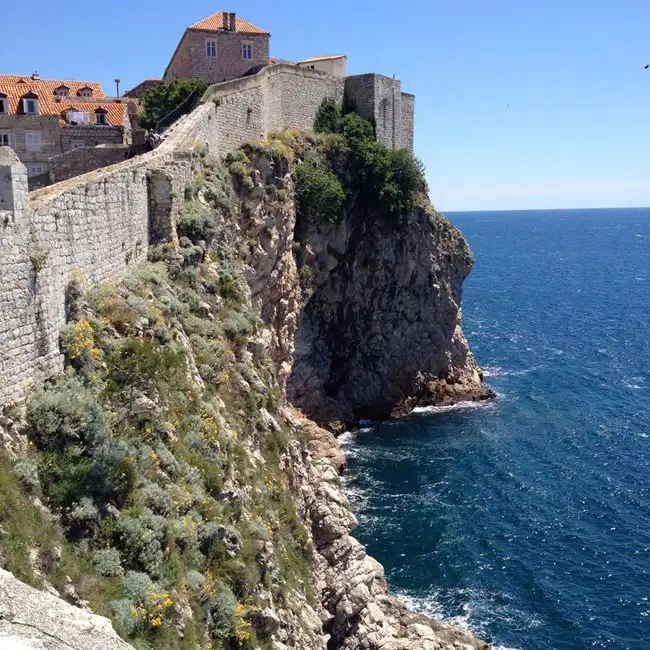
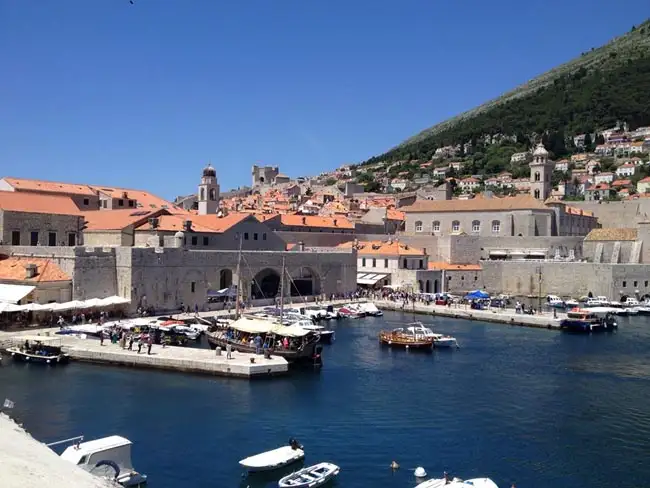
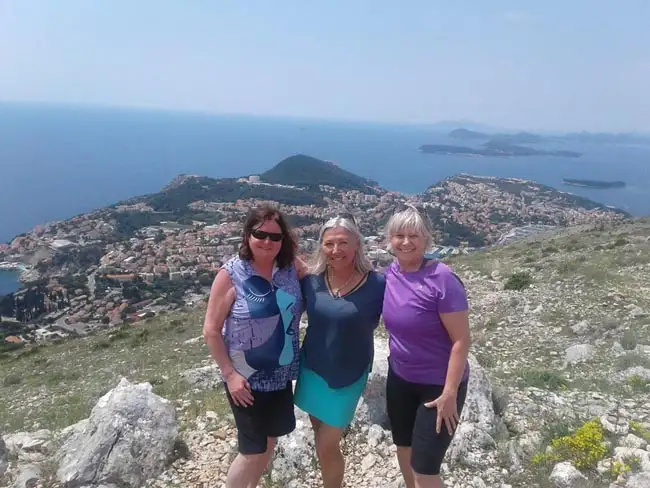
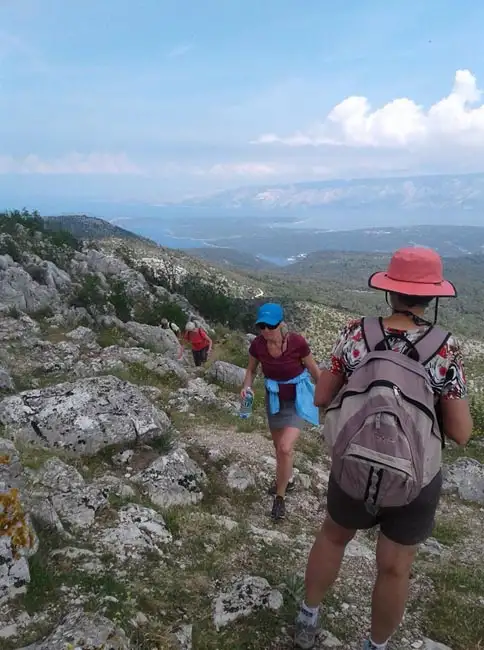
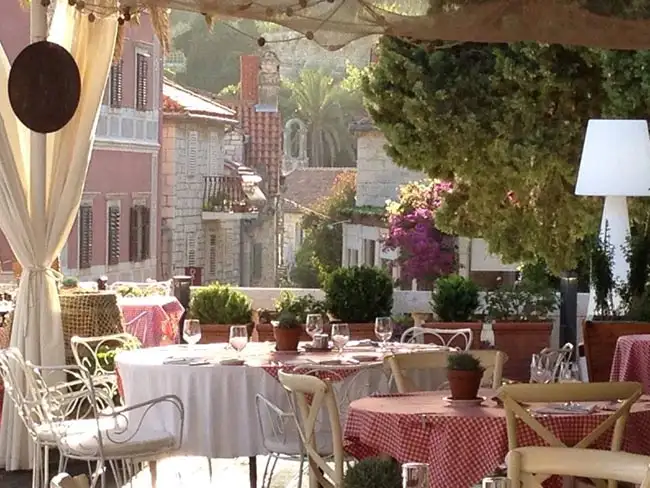
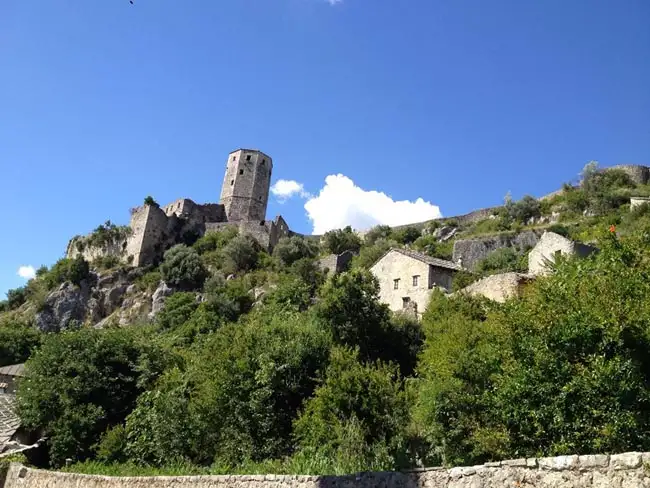
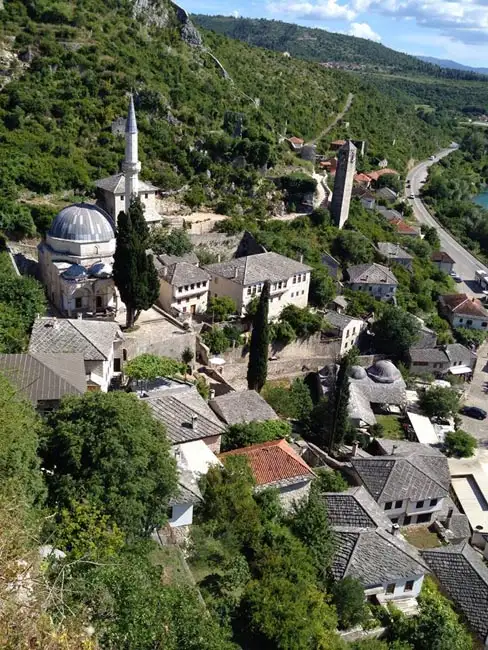
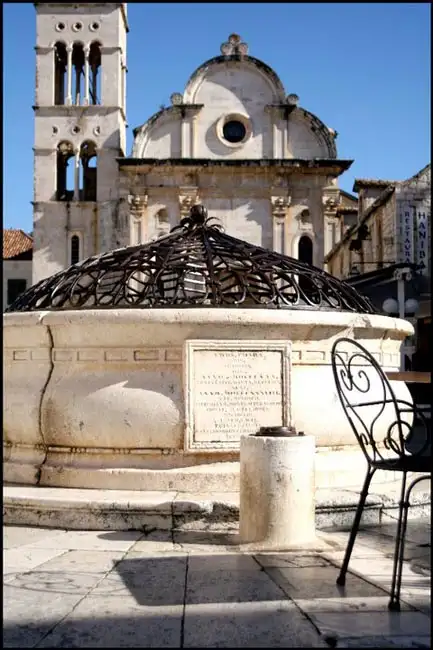
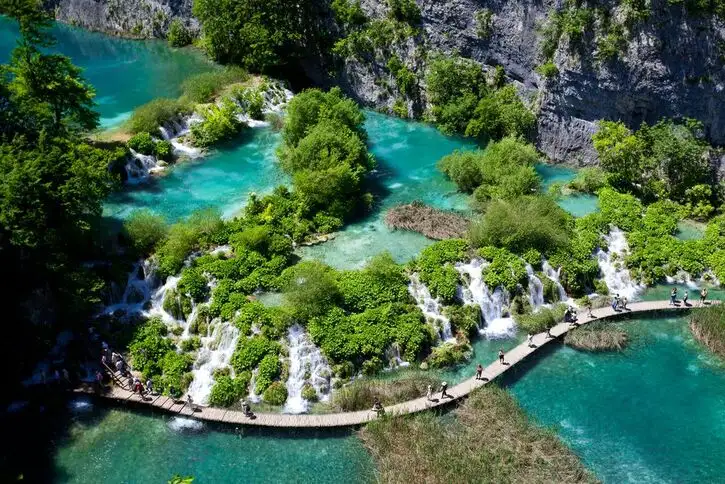
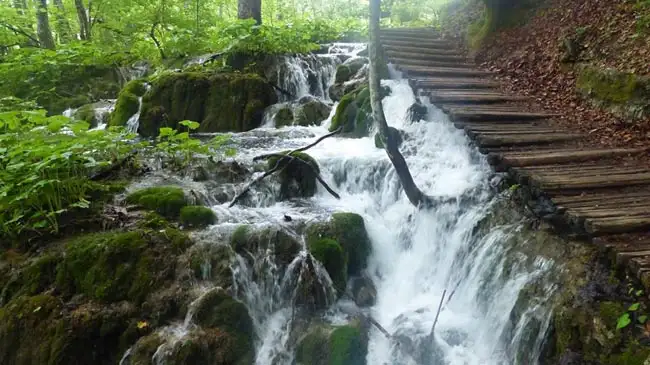
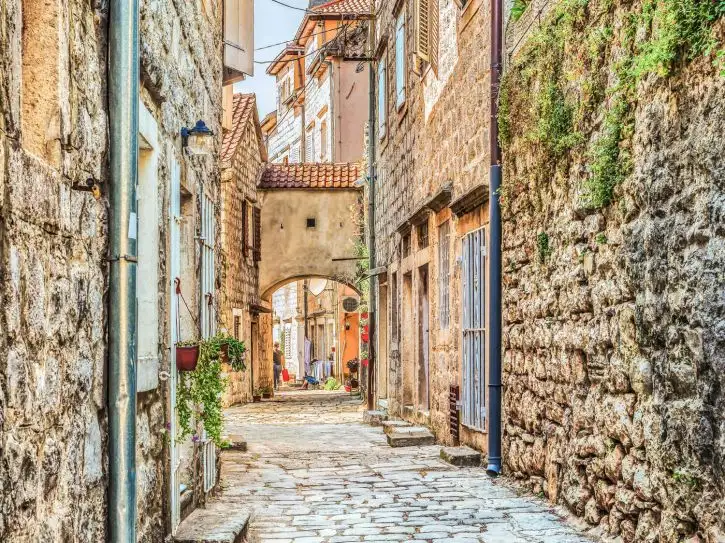
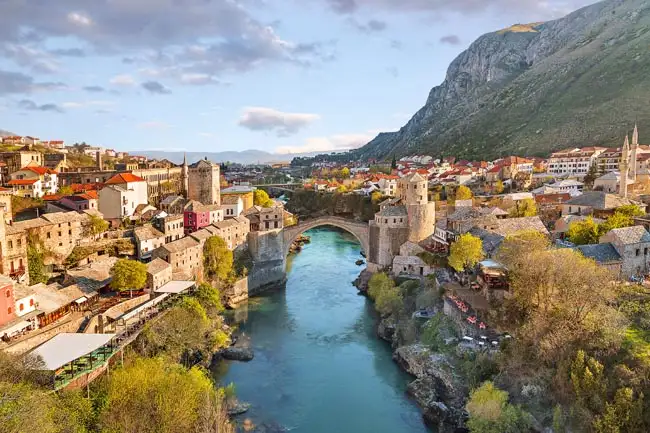
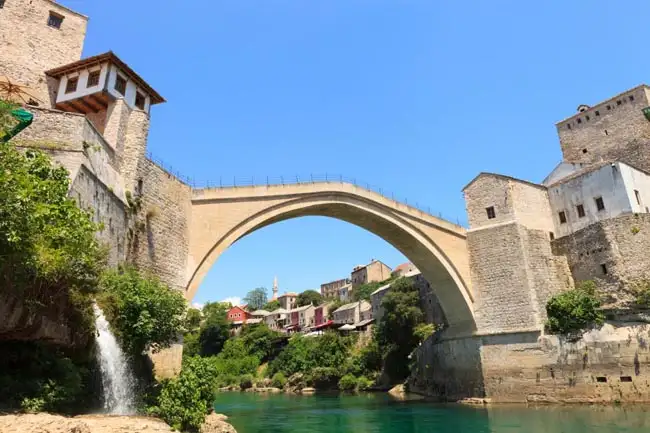

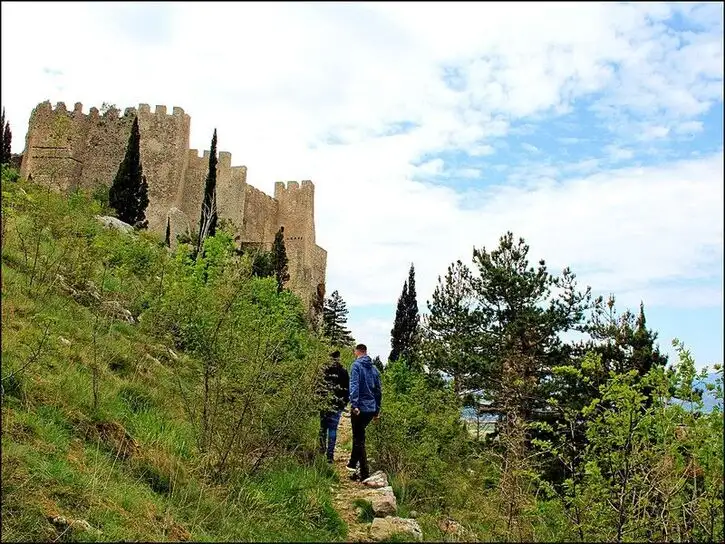
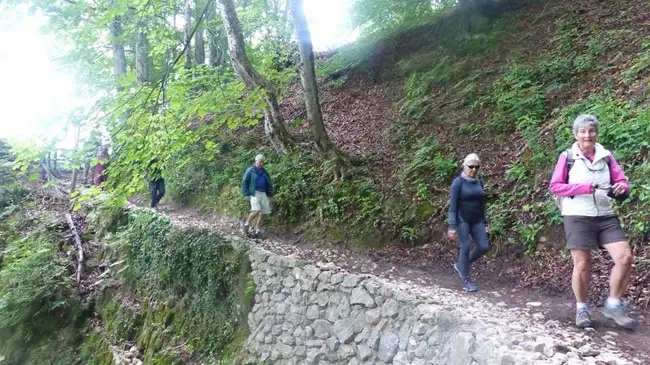
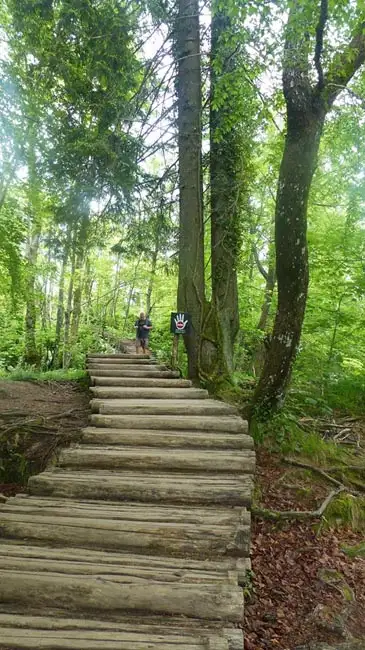
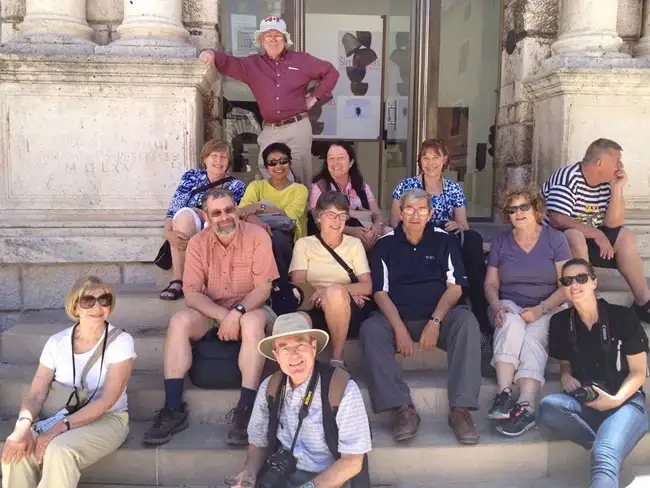
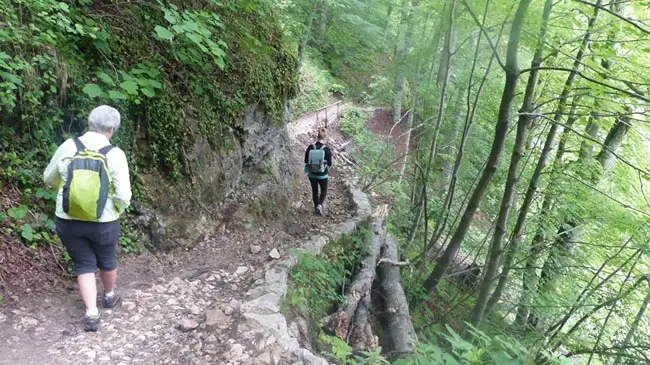
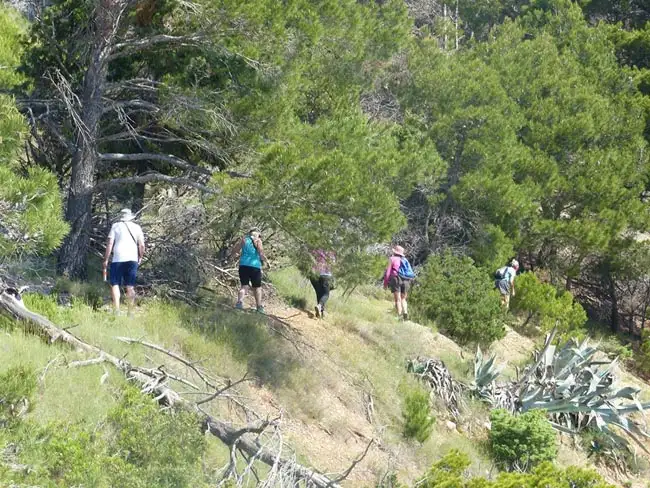
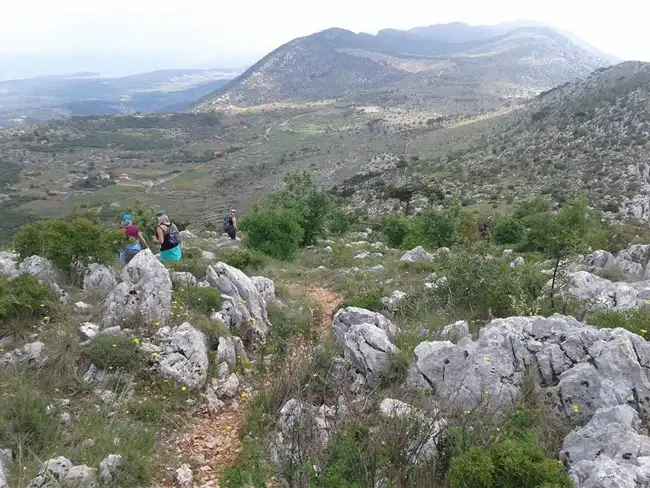
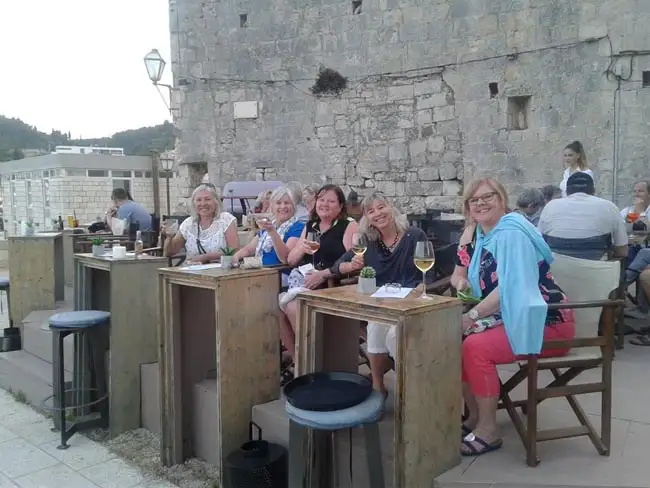
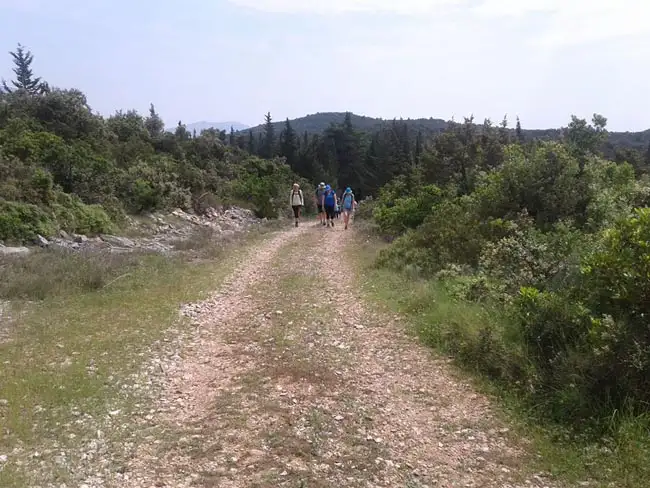
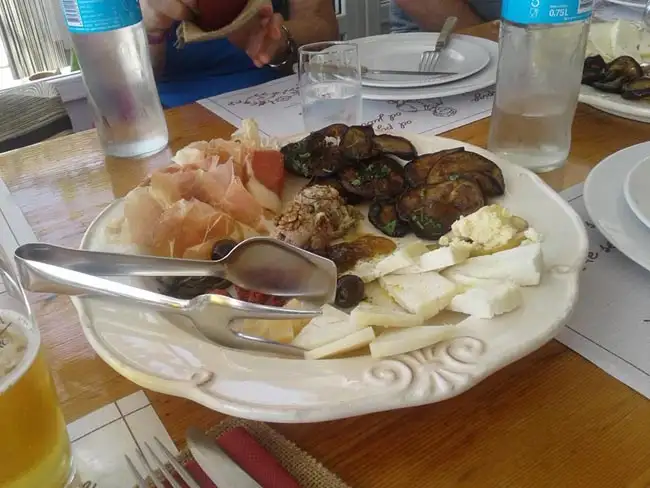
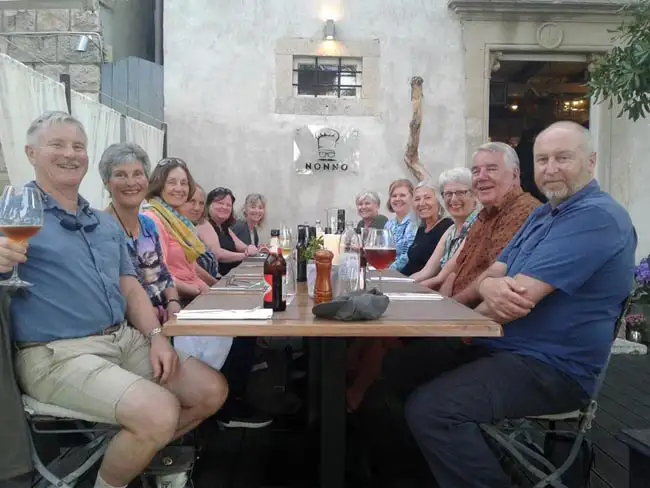
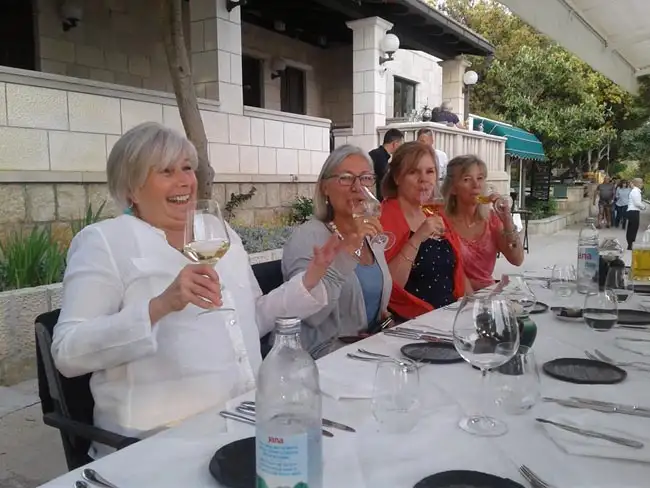
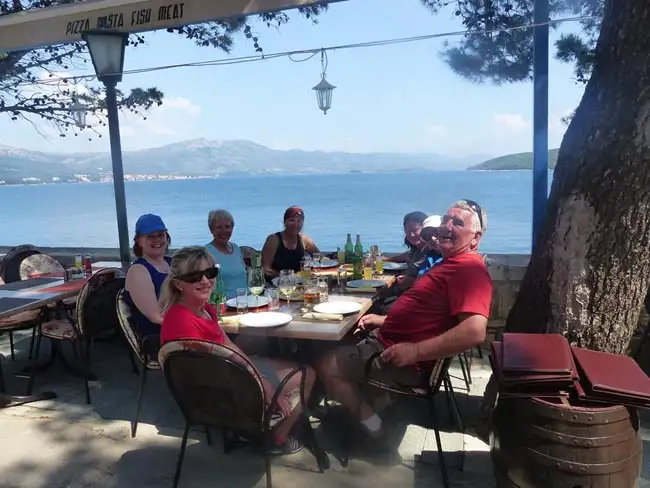
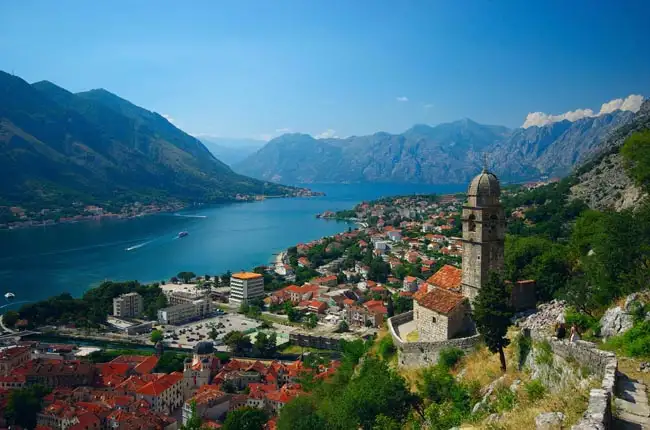
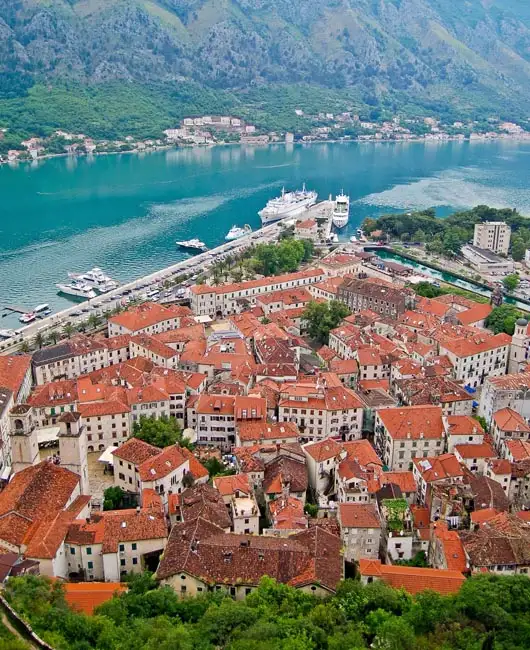
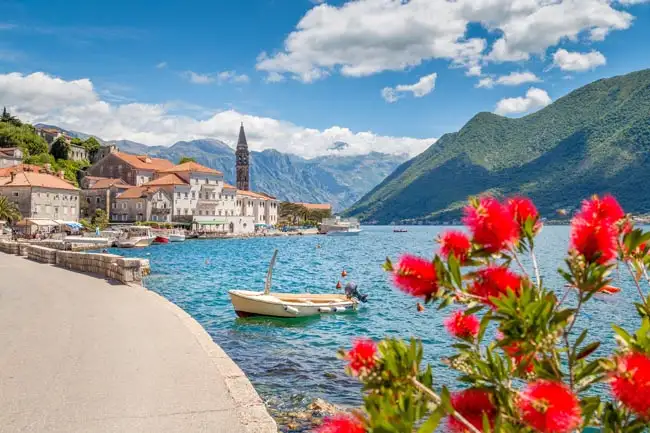
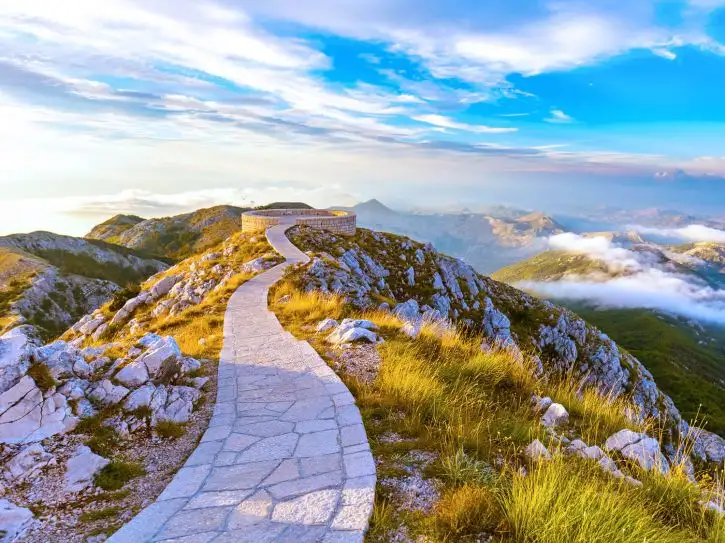
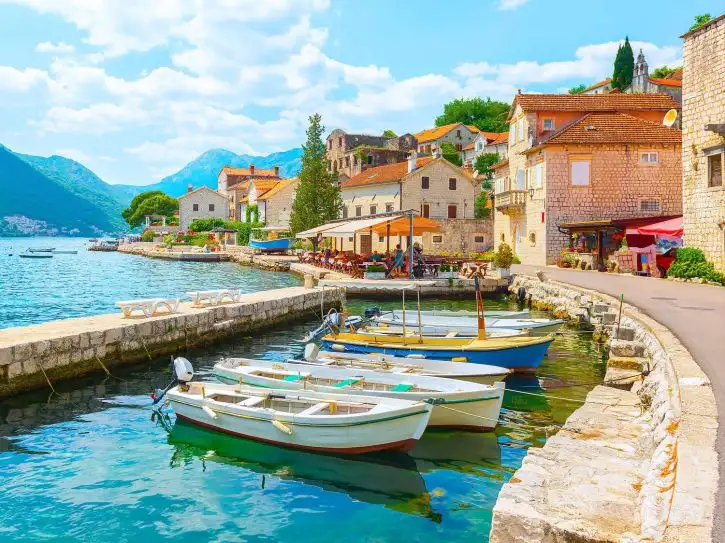
Excellent
Overall Rating
4.6
Extend Your Trip
This tour is part of a series that can be upgraded to make for a longer trip.

Fast and easy
Book this tour
Book your unforgettable adventure today! For any questions or advice, don't hesitate to contact us.
Have questions?
Contact Us
1-800-665-3998
- Final payment is due 90 days prior to departure.
- A non-refundable $500 USD deposit is payable at the time of booking
- Optional Single Supplement: $1170 USD (number of singles limited).
- Transferring to another tour or tour date is only permissible outside of 120 days prior to departure and is subject to a $100 USD change fee. (Read our cancellation policy for more info.)
Prices below are per person, twin-sharing costs in US Dollars (USD). Pricing does not include airfare to/from the tour and any applicable taxes. Get general information on flights to/from the tour.
Choose your departure date:
Frequently Asked Questions
- What is the maximum number of participants on a trip?Most of our tours carry a maximum of 18 participants; some tours (ie hiking tours) top out at 16. In the event that we do not achieve our minimum complement by our 90-day deadline, we may offer group members the option of paying a "small-group surcharge" as an alternative to cancellation. If all group members agree, we will confirm the trip at existing numbers; this surcharge is refundable in the event that we ultimately achieve our regular minimum. If the small group surcharge is not accepted, we will offer a refund of your deposit or a different trip of your choice.
- Can I extend my tour either at the beginning or end? What about stopovers?Yes, you can extend your tour either at the beginning or the end and we can book accommodation in our tour hotel. Stopovers are often permitted, depending on air routing. Stopovers usually carry a "stopover" fee levied by the airline.
- How do I make a reservation? How and when do I pay?The easiest way to make a reservation is via our website; during office hours, you are also more than welcome to contact us by telephone.
A non-refundable deposit is payable at the time of booking; if a reservation is made within 90 days, full payment is required. Some trips require a larger deposit. If international airline bookings require a non-refundable payment in order to secure space or the lowest available fare, we will require an increase in deposit equal to the cost of the ticket(s).
Early enrolment is always encouraged as group size is limited and some trips require greater preparation time.
Once we have received your deposit, we will confirm your space and send you a confirmation package containing your trip itinerary, any visa/travel permit related documents, invoice, clothing and equipment recommendations, general information on your destination(s), and forms for you to complete, sign and return to us. Your air e-tickets (if applicable), final hotel list, final trip itinerary, and instructions on how to join your tour, will be sent approximately 2-3 weeks prior to departure. - What about cancellations, refunds, and transfers?Please review our cancellation policy page for details.
- I am a single who prefers my own room. What is a single supplement?All of our tours have a single supplement for those who want to be guaranteed their own room at each location.
This supplement is a reflection of the fact that most hotels around the world do not discount the regular twin-share rate for a room by 50% for only one person occupying a room. Most hotels will give a break on the price, but usually in the range of 25-30% of the twin-share rate. This difference, multiplied by each night, amounts to the single supplement.
The conventional amount can also vary from country to country and some destinations are more expensive than others for single occupancy. In order to be "single friendly," the supplements we apply are not a profit centre for us and we do our best to keep them as reasonable as possible.
On most tours we limit the number of singles available, not to be punitive, but rather because many hotels allow for only a limited number of singles; some smaller hotels at remote locations also have a limited number of single rooms available.
Please note that most single rooms around the world are smaller than twin-share rooms and will likely have only one bed. - Do you have a shared accommodation program?Yes! If you are single traveller and are willing to share, we will do our best to pair you with a same-gender roommate. On most of our tours, if we fail to pair you, we will absorb the single supplement fee and you will default to a single room at no extra charge. At some destinations, however, where single rooms are not significantly discounted, or not at all, we may apply a "mandatory" single in the event that we cannot find you a share partner. This is usually 50% of the usual supplement, but can be as much as 100%. If applicable, this proviso will be noted on each tour page on this website, on your invoice, and in our tour date/price book (available for download under "Resources").
Please choose a departure date!
DATES & PRICES
